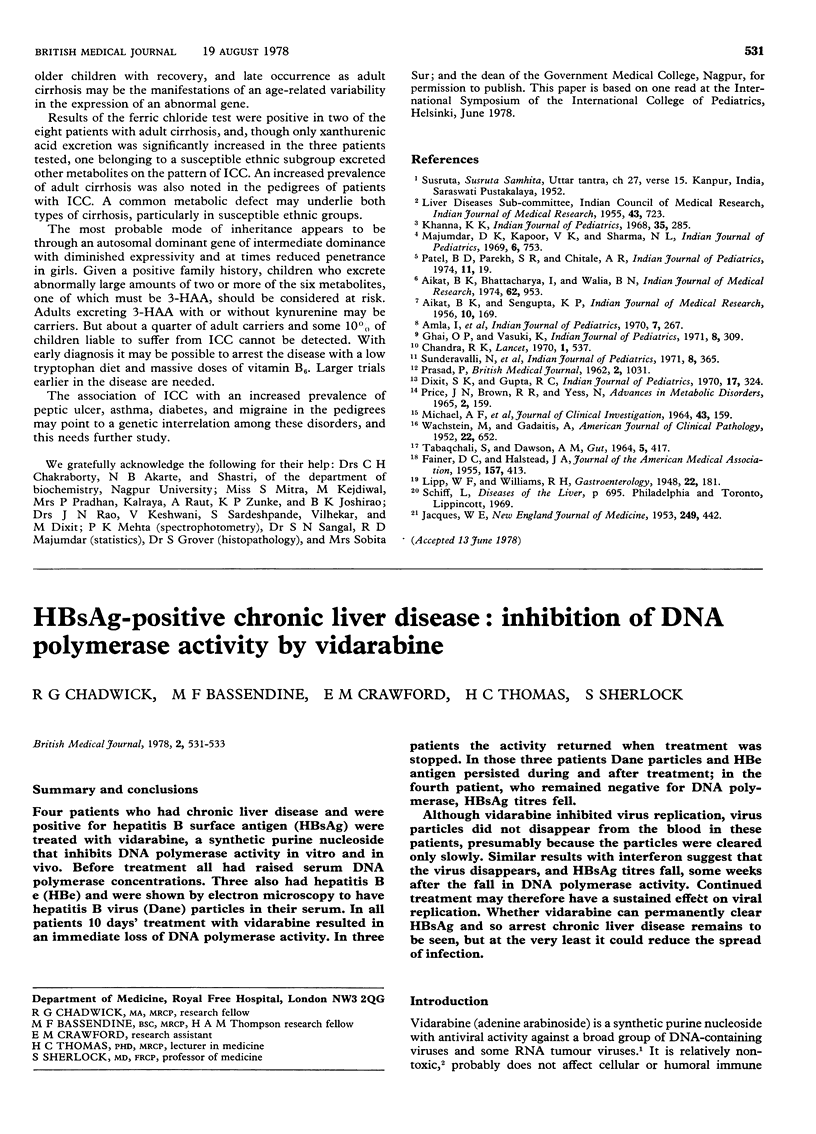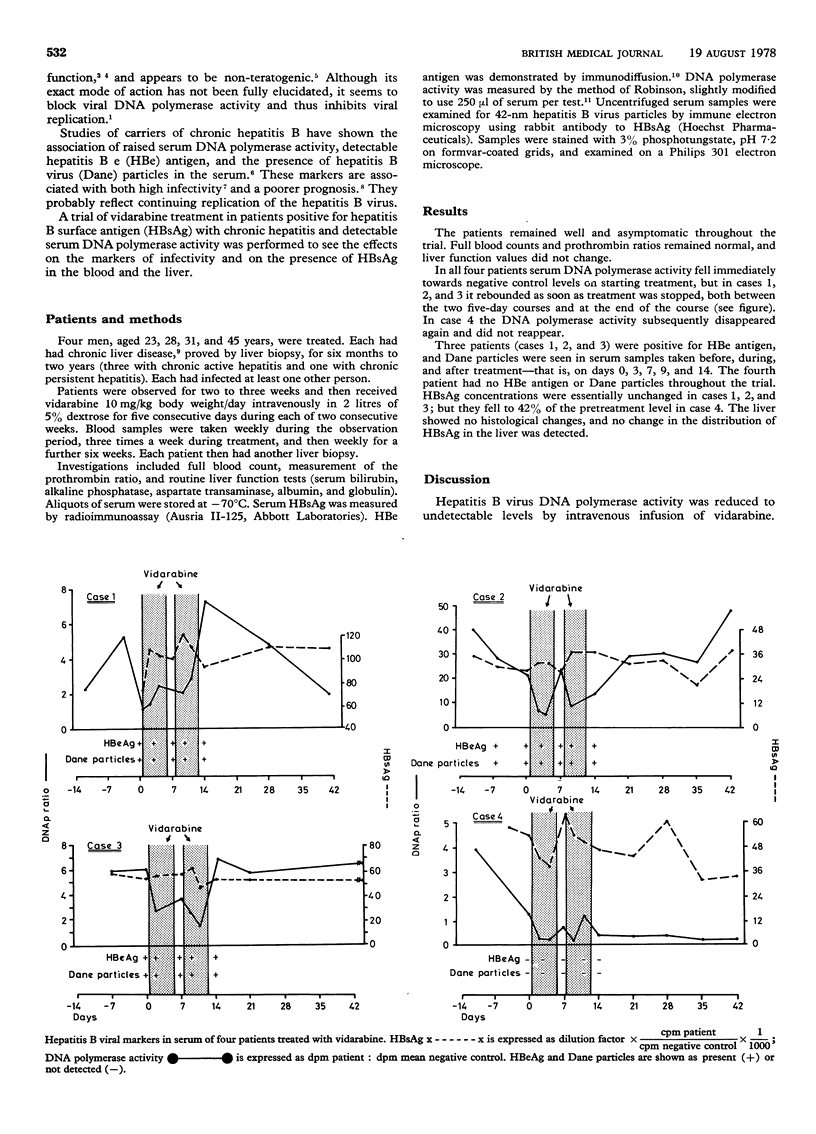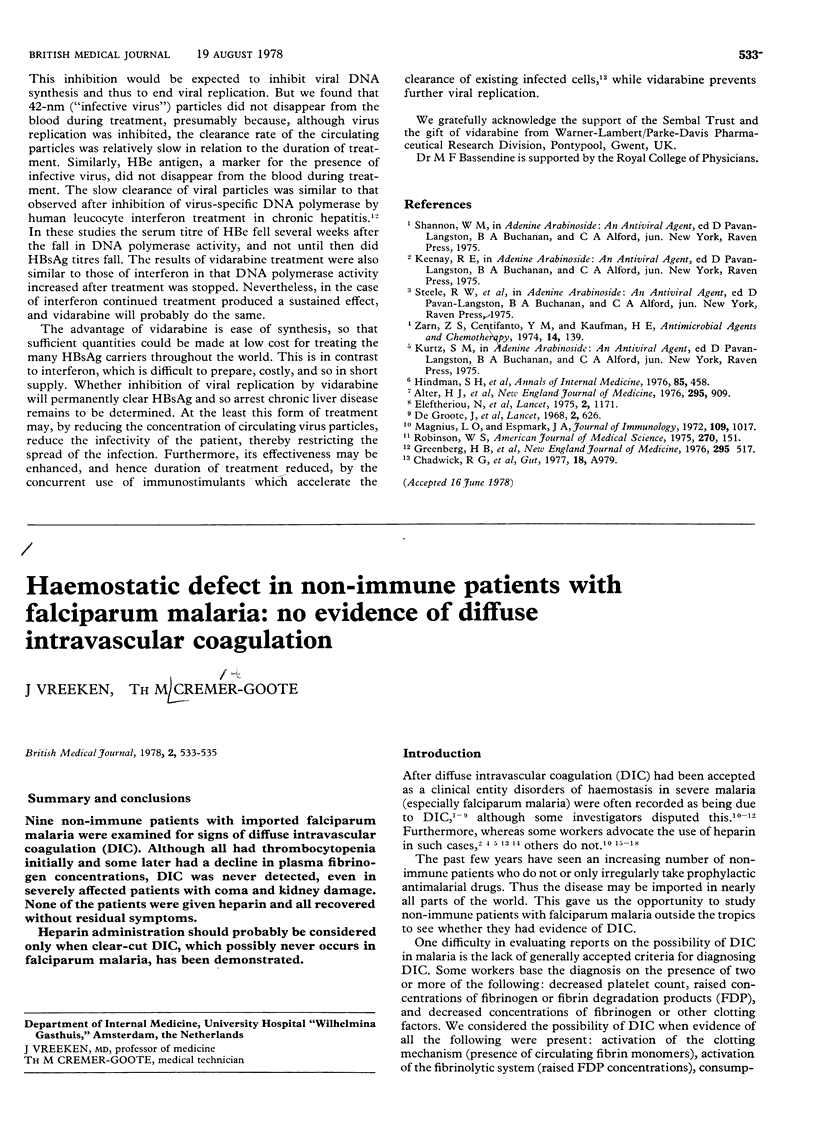Abstract
Four patients who had chronic liver disease and were positive for hepatitis B surface antigen (HBsAg) were treated with vidarabine, a synthetic purine nucleoside that inhibits DNA polymerase activity in vitro and in vivo. Before treatment all had raised serum DNA polymerase concentrations. Three also had hepatitis B e (HBe) and were shown by electron microscopy to have hepatitis B virus (Dane) particles in their serum. In all patients 10 days' treatment with vidarabine resulted in an immediate loss of DNA polymerase activity. In three patients the activity returned when treatment was stopped. In those three patients Dane particles and HBe antigen persisted during and after treatment; in the fourth patient, who remained negative for DNA polymerase, HBsAg titres fell. Although vidarabine inhibited virus replication, virus particles did not disappear from the blood in these patients, presumably because the particles were cleared only slowly. Similar results with interferon suggest that the virus disappears, and HBsAg titres fall, some weeks after the fall in DNA polymerase activity. Continued treatment may therefore have a sustained effect on viral replication. Whether vidarabine can permanently clear HBsAg and so arrest chronic liver disease remains to be seen, but at the very least it could reduce the spread of infection.
Full text
PDF


Selected References
These references are in PubMed. This may not be the complete list of references from this article.
- Alter H. J., Seeff L. B., Kaplan P. M., McAuliffe V. J., Wright E. C., Gerin J. L., Purcell R. H., Holland P. V., Zimmerman H. J. Type B hepatitis: the infectivity of blood positive for e antigen and DNA polymerase after accidental needlestick exposure. N Engl J Med. 1976 Oct 21;295(17):909–913. doi: 10.1056/NEJM197610212951701. [DOI] [PubMed] [Google Scholar]
- Eleftheriou N., Thomas H. C., Heathcote J., Sherlock S. Incidence and clinical significance of e antigen and antibody in acute and chronic liver disease. Lancet. 1975 Dec 13;2(7946):1171–1173. doi: 10.1016/s0140-6736(75)92657-4. [DOI] [PubMed] [Google Scholar]
- Hindman S. H., Gravelle C. R., Murphy B. L., Bradley D. W., Budge W. R., Maynard J. E. "e" Antigen, Dane particles, and serum DNA polymerase activity in HBsAg carriers. Ann Intern Med. 1976 Oct;85(4):458–460. doi: 10.7326/0003-4819-85-4-458. [DOI] [PubMed] [Google Scholar]
- Magnius L. O., Espmark J. A. New specificities in Australia antigen positive sera distinct from the Le Bouvier determinants. J Immunol. 1972 Nov;109(5):1017–1021. [PubMed] [Google Scholar]
- Robinson W. S. DNA and DNA polymerase in the core of the Dane particle of hepatitis B. Am J Med Sci. 1975 Jul-Aug;270(1):151–159. doi: 10.1097/00000441-197507000-00021. [DOI] [PubMed] [Google Scholar]


